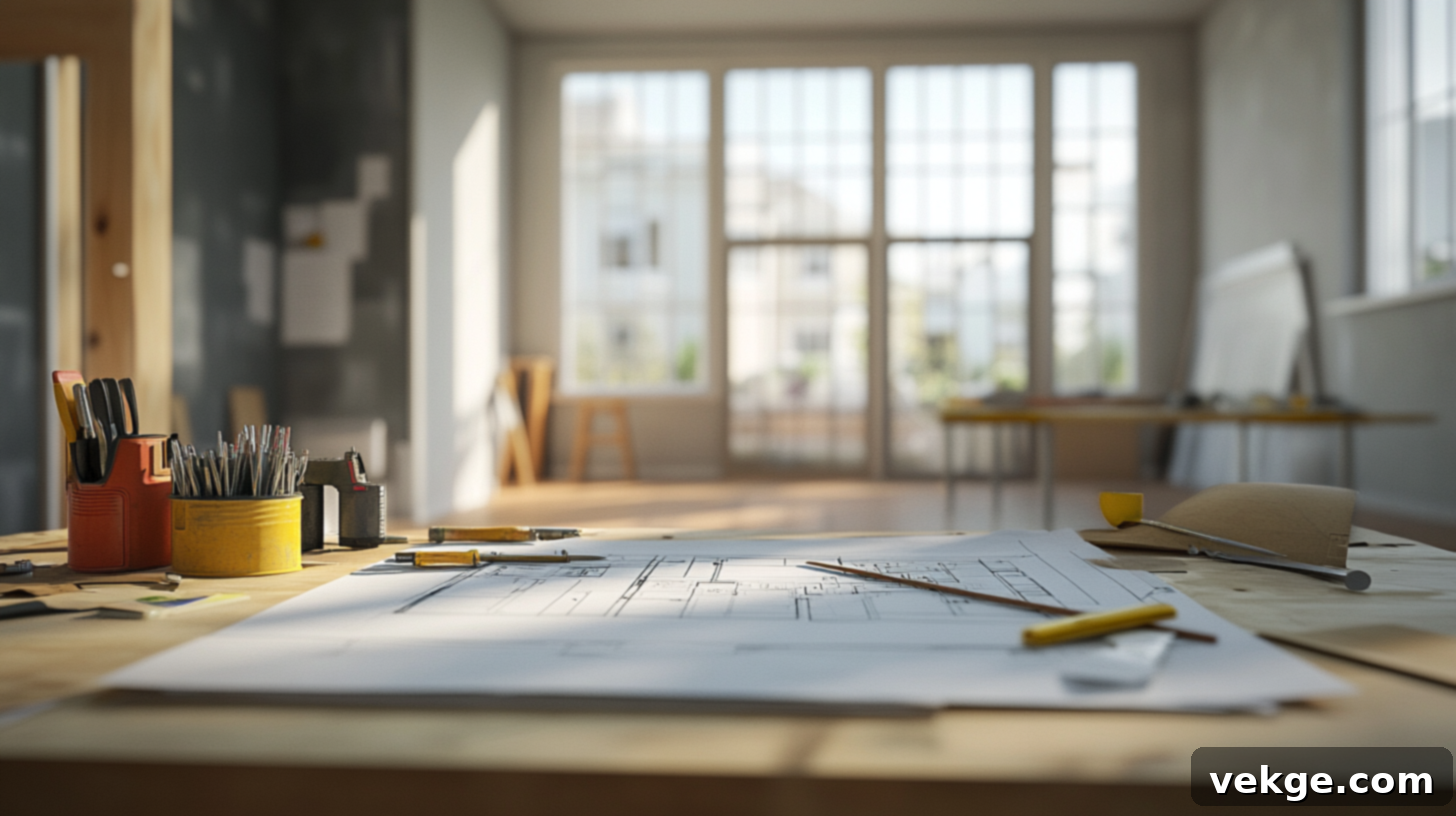The Ultimate Home Renovation Checklist: Your Step-by-Step Guide to a Smooth Project
Renovating your home is an exciting journey, offering the chance to transform your living space into something truly reflective of your dreams and needs. However, without a clear roadmap, it can quickly become overwhelming, leading to stress, unexpected costs, and delays. Whether you’re dreaming of a modern kitchen, a spa-like bathroom, or a complete home overhaul, having a well-structured plan is crucial for success.
This comprehensive guide provides an essential home renovation checklist, breaking down every stage of the process into simple, manageable steps. From defining your vision and securing your budget to hiring the perfect team and adding the final touches, we’ll walk you through everything you need to know. You’ll gain practical advice, helpful tips, and real-world insights to keep your project on track, avoid common pitfalls, and ensure a satisfying outcome. Let’s eliminate the guesswork and start building the home you’ve always envisioned.
Why a Renovation Checklist Matters for Your Home Project
Embarking on a home renovation without a detailed plan is like setting sail without a compass – you’re likely to drift off course. A well-designed renovation checklist serves as your essential navigation tool, providing structure and clarity to a potentially complex undertaking. It helps you stay focused on your priorities, manage expectations, and make informed decisions at every turn.
Such a checklist is invaluable for several reasons: it prevents confusion by outlining tasks clearly, minimizes delays by anticipating necessary steps, and helps control costs by ensuring all elements are considered upfront. With a reliable checklist, you can approach each phase with greater confidence, knowing that no critical detail will be overlooked. What might initially seem like an overwhelming project becomes a series of manageable actions, each contributing to the overall success. Ultimately, a robust checklist not only guides the transformation of your home but also protects your investment, time, and peace of mind.
Your Step-by-Step Home Renovation Checklist
Home renovations can quickly become overwhelming without the right plan in place. This comprehensive checklist guides you through each essential phase, helping you stay organized, avoid setbacks, and turn your ideas into a finished space that truly fits your life. Follow these steps to ensure a smooth and successful renovation from start to finish.
Step 1: Define Your Goals and Scope

The foundation of any successful renovation is setting clear, realistic goals. Before lifting a single hammer, take time to consider what you truly need and want from your updated space. Start by asking yourself: what specific problems do you want to solve? Do you need improved functionality, a refreshed aesthetic, better energy efficiency, or a combination of all three?
Identify the areas that require the most improvement and differentiate between essential features and optional extras. For example, is a modern, open-plan kitchen a must-have for your family’s lifestyle, or would a simple refresh of your current bathroom suffice? Focus on the improvements that will make the biggest positive difference in your daily life. It’s also important to stay practical about what you can accomplish within your budget and time constraints. A clear and well-defined scope helps prevent your project from growing beyond your initial plans, a common issue known as “scope creep.” Once your goals are firmly established, you’ll be well-prepared for the next critical step: building a budget that transforms your renovation dreams into a tangible reality.
Step 2: Set Your Budget and Timeline

Establishing a clear budget and realistic timeline is paramount for a smooth and stress-free renovation. A meticulously organized financial and chronological plan empowers you to manage decisions effectively, prevent costly delays, and ensure your project stays on track from inception to completion. Begin by meticulously outlining all your primary expenses, which typically include materials, labor costs for various trades (e.g., electricians, plumbers, carpenters), necessary permits, and potential design services. It’s also wise to allocate funds for unexpected changes or unforeseen issues that often arise during construction, commonly known as a contingency fund (typically 10-20% of your total budget).
Create a detailed spreadsheet or use budgeting software to monitor your spending closely and ensure you stay within your predefined financial limits. Simultaneously, develop a realistic timeline for each major phase of the project, including initial planning, material procurement and purchasing, the construction phase itself, and the final finishing touches. Remember to factor in potential delays for material deliveries or inspection wait times. Keeping your schedule and budget meticulously aligned makes it significantly easier to manage expectations, communicate with your team, and reduce overall stress. With a robust financial and time plan in place, you’ll be ready to move forward confidently with your renovation design.
Step 3: Plan Your Renovation Design
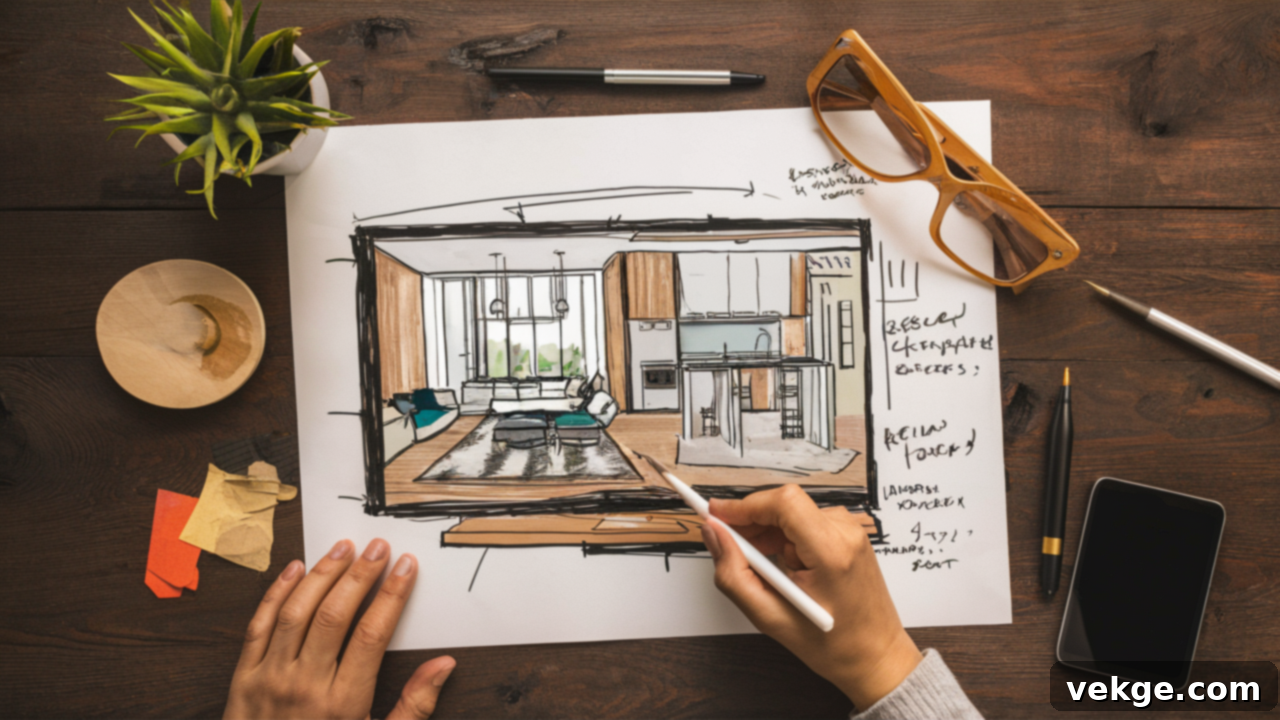
Careful and thorough design planning is where your renovation ideas truly begin to come to life. Start by creating detailed floor plans that accurately reflect the desired layout, flow, and functionality of your transformed space. Utilize planning apps, simple sketches, or even professional drafting tools to test different layouts and make adjustments early in the process. This proactive approach helps identify potential design flaws or inefficiencies, preventing costly mistakes once construction commences. Consider breaking your project down into logical stages, especially if you’re working with a limited timeline, budget, or if the renovation is extensive.
For major structural changes, significant space reconfiguration, or projects requiring specialized technical skills (like complex plumbing or electrical work), professional help from an architect or interior designer may be not just beneficial but necessary. These experts can offer invaluable insights, ensure structural integrity, and help you visualize the final outcome. Getting the layout, material selections, and specific details right from the beginning saves considerable time, reduces rework, and prevents numerous problems down the line. With your design plan meticulously prepared, the next crucial step is to obtain all necessary permits and ensure your project fully complies with local building regulations.
Step 4: Check Permits and Regulations

Before any major construction work begins, it is absolutely essential to ensure that your renovation project complies with all local building codes and regulations. Most municipalities and regions have strict guidelines in place to guarantee the safety, structural integrity, and general welfare of homes and their occupants. Failing to obtain the necessary permits can lead to significant fines, forced demolition, or difficulties when selling your home in the future.
You will likely need permits for structural changes, such as removing or adding walls; electrical rewiring; plumbing upgrades; significant roof work; or large outdoor projects like deck construction or additions. To stay on track and avoid unexpected issues, contact your local building department or municipal planning office as early as possible. Inquire about which permits are applicable to your specific project and what documentation (e.g., blueprints, engineering plans) is required for submission. Submit your plans well in advance, as the approval process can often take several weeks, or even months, depending on the complexity and local bureaucracy. Obtaining permits proactively helps prevent costly delays, legal issues, and penalties during the construction phase. Once this critical administrative step is complete, you’ll be ready to assemble the skilled team who will bring your meticulously planned vision to life.
Step 5: Build Your Renovation Team

Selecting the right professionals is undeniably one of the most crucial steps for a seamless and successful renovation. Your chosen team—comprising general contractors, sub-contractors, designers, and specialized tradespeople—will be responsible for translating your detailed plans into tangible progress. Begin by gathering quotes from multiple reputable sources. It’s highly recommended to interview at least three contractors to compare bids, experience, and communication styles.
Thoroughly vet each potential team member: check their past work and portfolios, confirm their licenses are current and valid, verify their insurance coverage (liability and worker’s compensation), and meticulously read online reviews and solicit personal references. A well-structured contract is non-negotiable. It should clearly outline the full scope of work, detail payment terms and schedules, include comprehensive material specifications, specify firm start and completion dates, and explicitly explain warranties for both labor and materials. Be vigilant for red flags, such as unusually low bids (which often indicate cut corners), demands for large upfront payments, missing credentials, or vague and unclear contracts. Taking the time and effort to choose wisely at this stage will significantly help avoid problems, disputes, and rework later in the project. With a competent and trusted team in place, you are now ready to commence the construction phase and watch your plans transform into a beautifully finished space.
Step 6: Renovation Timeline Checklist
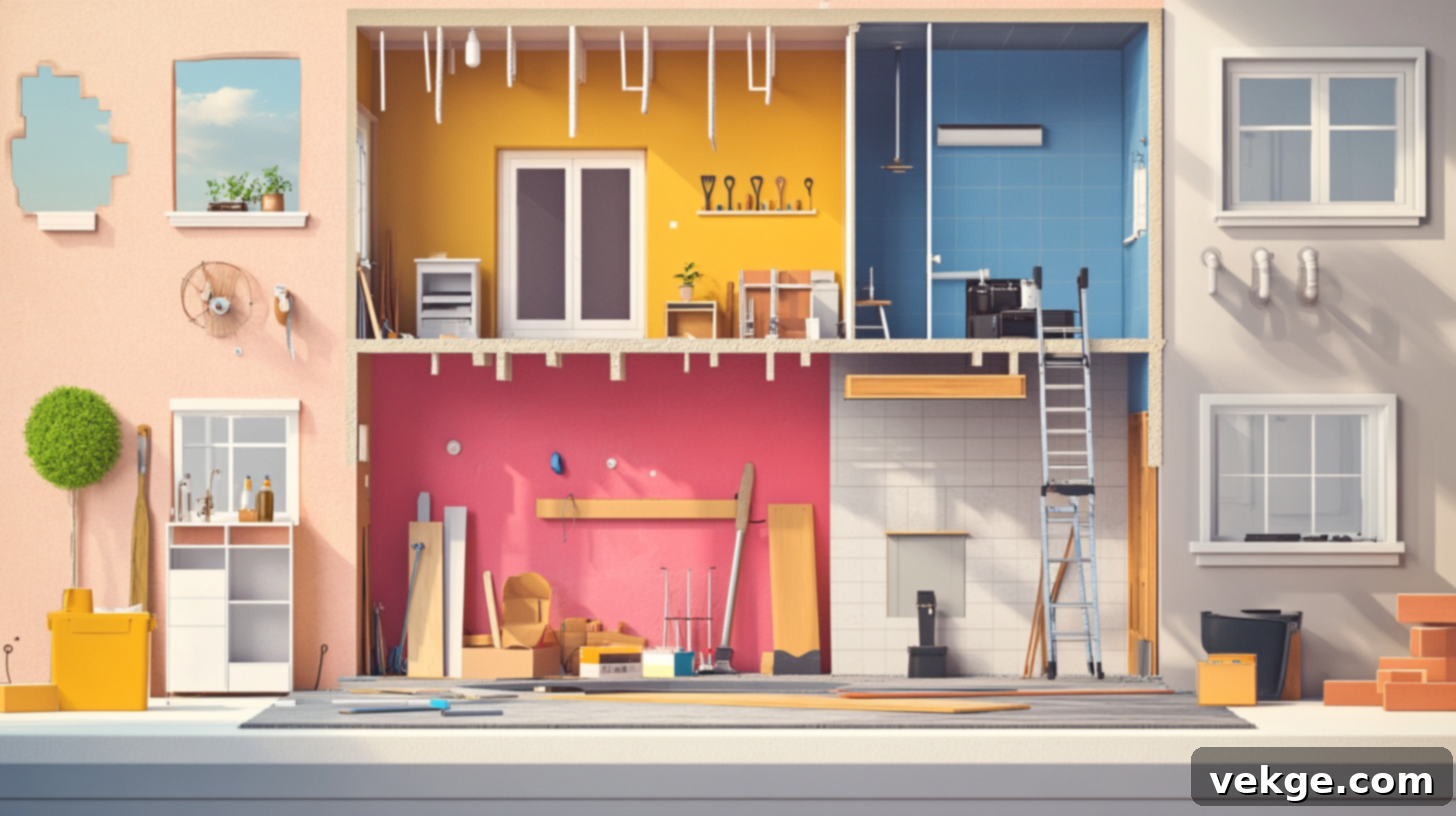
A smooth renovation begins with proper preparation and a clear plan of execution. Dividing the project into distinct phases helps you stay organized, manage expectations, and minimize unwelcome surprises. Below, each checklist outlines the key tasks to focus on before, during, and after construction, ensuring you stay on track and keep things moving efficiently in the right direction.
Pre-Construction Checklist
Before the first hammer swings, it’s essential to meticulously prepare your space for the impending work. This critical phase includes clearing out the renovation area, setting up safe access routes for workers, and notifying neighbors about potential noise or disruptions. A well-prepared site not only reduces stress for homeowners but also protects your property from damage and provides workers with a clear, safe, and efficient area to begin the job.
- Clear out the renovation area: Remove furniture, decor, and personal belongings.
- Cover and protect nearby furniture and non-renovation areas with drop cloths or plastic sheeting.
- Ensure safe and clear entry/exit points for workers and material deliveries.
- Notify neighbors about expected noise, dust, or potential disruptions and timelines.
- Arrange for temporary living arrangements if the renovation renders parts of your home unusable.
- Confirm all necessary utilities (water, electricity, gas) are accessible or temporarily shut off as required.
Construction Tasks
The main construction phase is where the exciting transformation truly happens. From initial demolition and framing to the installation of critical systems and finishes, each task must be executed carefully and in the correct sequence to ensure quality and efficiency. Staying actively involved and regularly communicating with your team, even as work is underway, helps ensure that progress aligns precisely with your plans and that no crucial steps are missed during this pivotal stage.
- Complete demolition and structural changes (e.g., wall removal, new framing).
- Upgrade or install new plumbing, electrical, and HVAC (heating, ventilation, air conditioning) systems (rough-ins).
- Install insulation for energy efficiency and soundproofing.
- Hang and finish drywall or other wall coverings.
- Prepare subfloors and install primary flooring materials (e.g., hardwood, tile).
- Install windows and exterior doors.
- Begin interior trim work (baseboards, crown molding) and paint preparation.
Final Touches
The final stretch of your renovation is all about pulling everything together to achieve the desired aesthetic and functionality. This phase includes detailed installations, meticulous painting, and a thorough cleanup. It’s also your crucial opportunity to conduct a comprehensive walkthrough and spot any minor imperfections or items that need adjustment before the project is officially declared complete. These finishing steps are key to elevating your updated space and making it truly feel like your dream home.
- Install cabinets, countertops, lighting fixtures, and major appliances.
- Complete all painting, staining, and final surface finishes.
- Install interior doors, hardware, and plumbing fixtures.
- Conduct a final walkthrough with your contractor to create a “punch list” of minor corrections or adjustments.
- Perform all necessary repairs and adjustments from the punch list.
- Professional cleaning to remove construction dust and debris.
Step 7: Post Renovation Tasks
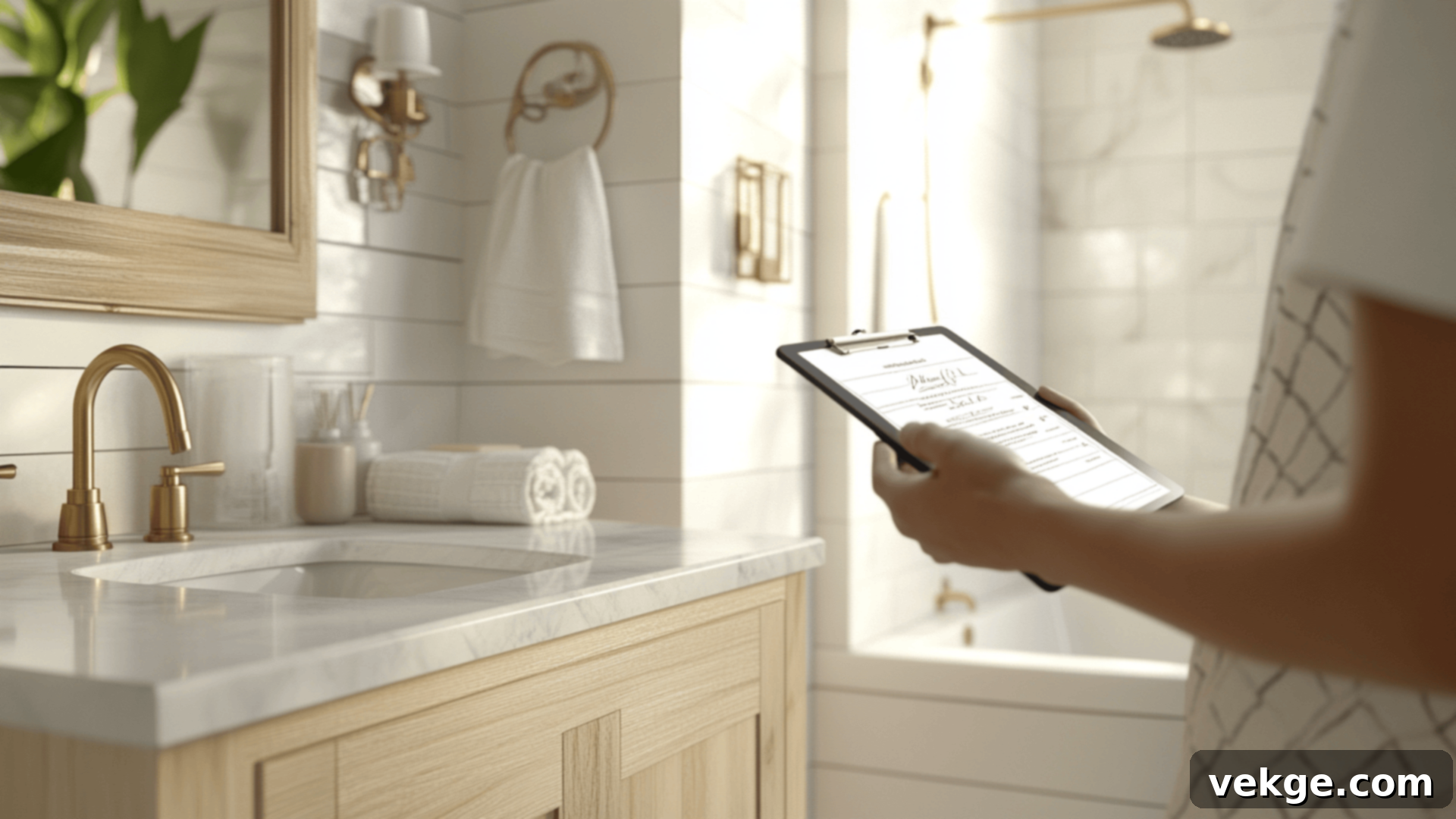
Completing the physical construction work doesn’t mean your renovation project is truly done. This vital final stage helps ensure your home not only meets your aesthetic expectations but is also fully functional, safe, and ready for you to enjoy. Begin with a thorough final inspection. Walk through the newly renovated space carefully, systematically testing all new appliances, electrical outlets, light fixtures, and plumbing fixtures to ensure they operate correctly.
Compare the finished results meticulously against your original plans, specifications, and the agreed-upon contract to confirm that all tasks were completed properly and to the expected quality. Clean the entire area thoroughly, meticulously removing any lingering dust, debris, and protective coverings from every surface. Collect and review all product warranties and guarantees for new materials and appliances, ensuring you understand what is covered and for how long. Note any small flaws, such as minor scratches, paint touch-ups, or small gaps, and promptly communicate them to your contractor for immediate correction. This thorough wrap-up safeguards your significant investment, provides you with complete peace of mind, and allows you to fully enjoy your beautifully updated home.
Room-By-Room Renovation Considerations
Each area in your home serves a unique purpose and therefore deserves thoughtful and tailored attention during a renovation. Focusing on one room at a time allows you to address specific needs, from optimizing functionality to enhancing comfort and style. Below are key considerations for the most frequently renovated spaces—the kitchen, bathroom, living room, and bedrooms—each playing a crucial role in supporting your lifestyle and shaping your everyday experience.
Kitchen Renovation

The kitchen is undeniably considered the heart of the home. It’s not merely a place where meals are prepared; it’s a central hub where families gather, conversations flow, and cherished moments are shared. A smart and well-executed kitchen renovation significantly enhances both the functionality and the overall usability of this vital space, making it more efficient for cooking and more inviting for entertaining.
Focus intently on optimizing the layout. Consider the “work triangle” between the sink, stove, and refrigerator, ensuring smooth and unobstructed movement, which directly impacts cooking speed and comfort. Ensure your new cabinets provide not only ample storage but also intelligent organization solutions. Select appliances that align perfectly with your lifestyle, whether you’re a gourmet chef, a frequent entertainer, or someone who values energy efficiency above all else. Think about different lighting layers (task, ambient, accent) and durable, easy-to-clean materials for countertops and backsplashes that withstand daily wear and tear.
Bathroom Upgrade
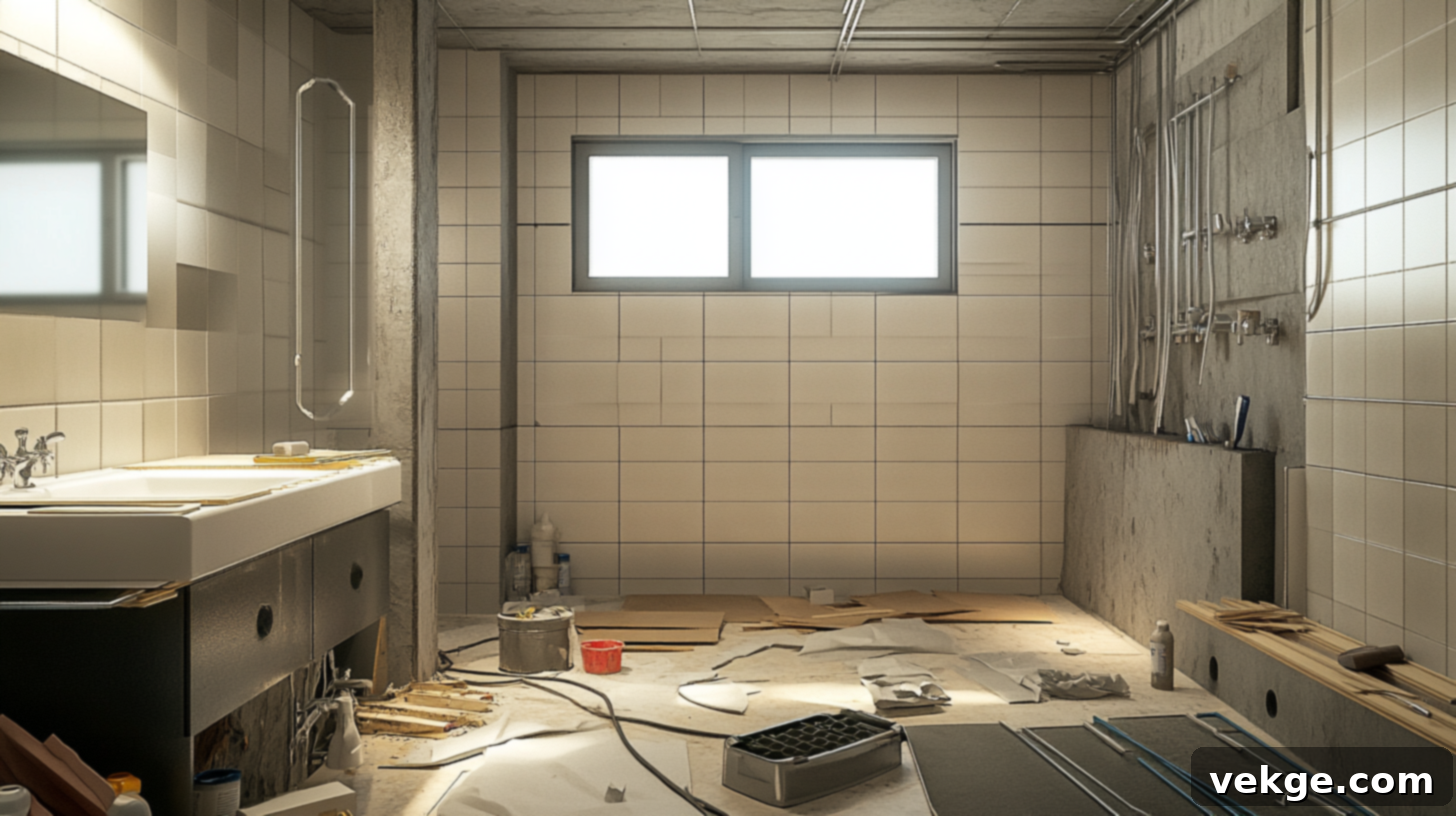
A bathroom should embody a sense of calm, cleanliness, and effortless functionality. As the space where you often begin and end your day, comfort, privacy, and practicality are equally paramount. Even seemingly small improvements can make a significant difference, especially in bathrooms with limited square footage. Prioritize good ventilation to prevent moisture issues, and ensure proper waterproofing to protect your home’s structure.
Start by meticulously checking and upgrading the plumbing. Older pipes or inefficient drainage systems can lead to hidden problems and costly repairs down the line. Choose finishes and materials that are specifically designed to resist moisture, are durable, and are easy to clean, such as ceramic tiles, quartz, or solid surface materials. Incorporate effective lighting, with a combination of overhead fixtures for general illumination and brighter, shadow-free lighting near mirrors for grooming tasks. Consider water-saving fixtures like low-flow toilets and showerheads to enhance sustainability. Thoughtful design ensures your bathroom is a truly rejuvenating sanctuary.
Living Areas and Bedrooms
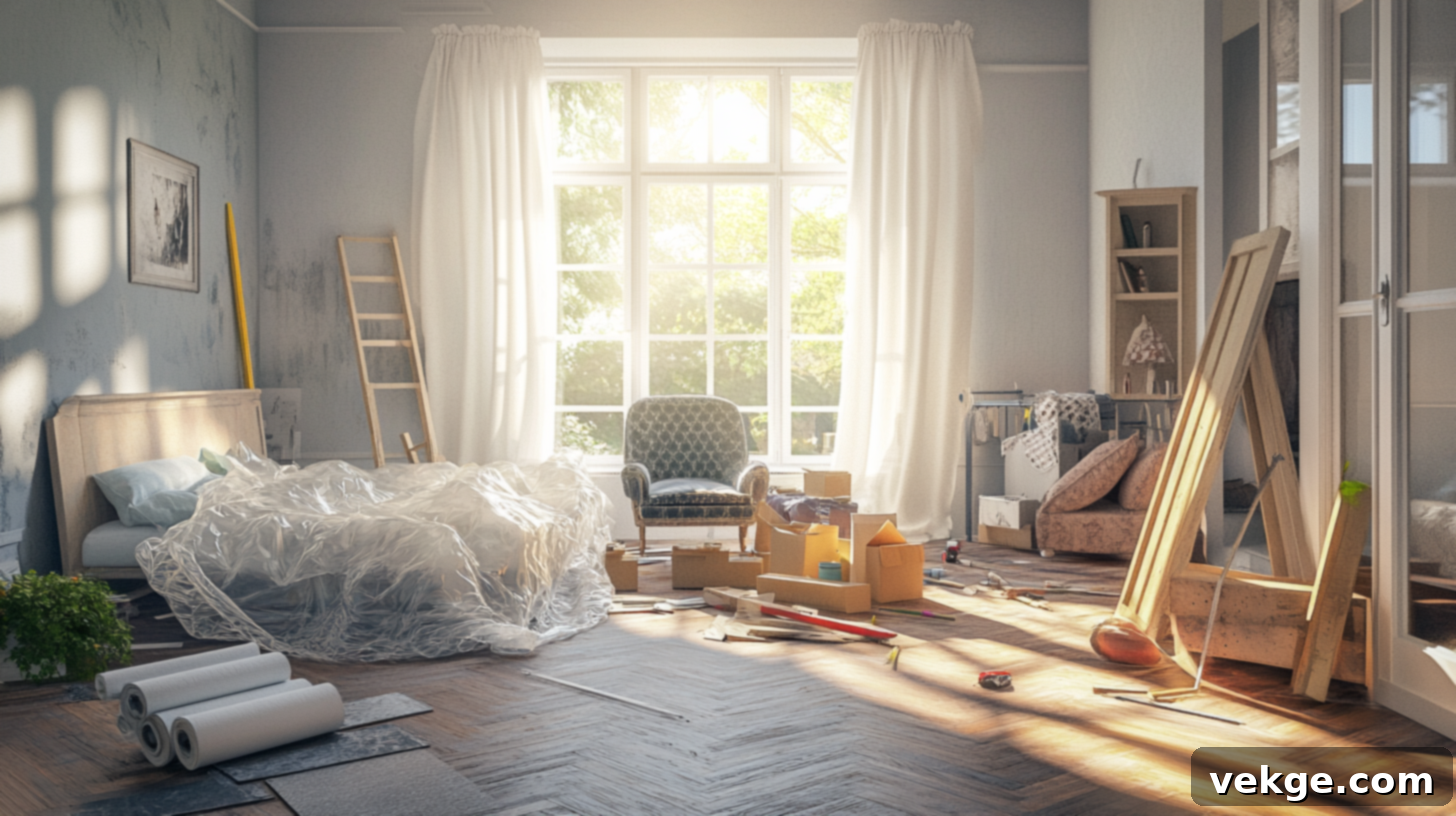
Living areas and bedrooms are the core spaces that support everyday living, providing zones for rest, relaxation, work, and connection. These rooms also serve as a canvas for your personal taste and style. Renovating them often focuses less on structural overhauls and more on enhancing comfort, creating desired moods, and improving the overall flow and aesthetics of the space. The goal is to create environments that feel inviting, functional, and uniquely yours.
Flooring sets the foundational tone for these spaces: choose materials that are quiet and soft underfoot for bedrooms (like carpet or engineered wood) or durable and easy to maintain for high-traffic living areas (like LVT or hardwood). Wall updates, such as fresh paint, elegant paneling, or stylish wallpaper, can quickly and dramatically change the feel and character of a space. Layer your lighting with a combination of ceiling fixtures for ambient light, floor and table lamps for task lighting, and wall lights or dimmers to adjust the mood at any time. Consider built-in shelving or custom storage solutions to maintain an uncluttered and serene environment. Optimizing these elements ensures your living areas and bedrooms are both beautiful and perfectly suited for modern life.
Smart, Safe, and Sustainable Upgrades for Your Home
Modern home updates extend beyond mere aesthetics; they are deeply rooted in enhancing comfort, bolstering safety, and improving how effectively your home supports daily life. Incorporating smart, safe, and sustainable upgrades creates a living space that feels more connected, easier to manage, and significantly better for the environment. These thoughtful enhancements often begin with small changes but yield lasting benefits. Below are three critically important areas to consider integrating into your renovation plans.
Smart Home Features
Smart technology has revolutionized the way we interact with and manage our homes. From intuitively adjusting lighting and climate control to commanding appliances with simple voice commands, these intelligent upgrades make daily tasks considerably easier, more efficient, and often more enjoyable. Advanced lighting systems can now automatically adapt to the time of day, your specific activities, or even your preferred mood, optimizing energy usage and comfort.
Smart thermostats learn your habits and help maintain ideal temperatures without requiring constant manual adjustments, leading to significant energy savings. Beyond convenience, smart home features bolster security and peace of mind; you can remotely lock doors, monitor security cameras, turn off forgotten appliances like the oven, or even check on your front door from anywhere in the world, all from the convenience of your smartphone. These features seamlessly integrate into your normal routine, offering a new level of control, efficiency, and safety for your modern home.
Accessibility Improvements
Designing with accessibility in mind is a forward-thinking approach that benefits everyone, not just those with specific mobility challenges. Even seemingly minor changes, such as widening doorways, installing low-threshold entries, or replacing traditional doorknobs with lever handles, can make a home significantly easier and safer to navigate for people of all ages and mobility levels. This includes young children, seniors, or anyone temporarily recovering from an injury.
In high-use areas like kitchens and bathrooms, adjusting the height of countertops, installing pull-out shelves, or incorporating grab bars and curbless showers can dramatically improve comfort, independence, and safety. Open-concept layouts and strategic, thoughtful lighting also play a crucial role in reducing physical obstacles and making everyday movement more natural and intuitive. Planning for accessibility doesn’t mean sacrificing style; rather, it means embracing universal design principles to ensure your space functions beautifully and effectively now, and well into the future, adapting to changing needs over time.
Sustainable Choices
Sustainability has become a central and increasingly important focus in contemporary home renovations. By consciously selecting energy-saving options and environmentally friendly materials, you can significantly reduce your long-term operational expenses while actively contributing to the protection of natural resources. Improving your home’s insulation, for instance, is one of the most effective ways to keep your living spaces comfortable year-round, drastically reducing the workload on your heating and cooling systems and lowering energy bills.
Replacing outdated appliances with newer, more energy-efficient models can lead to substantial reductions in both energy and water consumption. Furthermore, a growing number of homeowners are now opting for materials that are low-impact, made from recycled content, or responsibly sourced (e.g., reclaimed wood, low VOC paints, bamboo flooring). These deliberate decisions not only contribute to a healthier indoor environment but also align with a more thoughtful and eco-conscious way of living. Sustainable upgrades often begin with small, incremental steps but collectively yield profound and lasting benefits for both your home and the planet.
Common Home Renovation Mistakes to Avoid
Renovating a home involves a multitude of decisions, and even seemingly minor missteps can unfortunately lead to significant delays, unexpected additional costs, or even lasting regrets. Being proactive and aware of potential pitfalls is a powerful way to ensure your project stays on track and within budget. Here are some of the most frequent issues homeowners encounter during the planning and construction phases, along with insights on how to sidestep them:
- Underestimating total project costs: Always budget for more than you expect, including a contingency fund of 10-20% for unforeseen expenses.
- Failing to create a complete and realistic budget: Don’t overlook soft costs like permits, design fees, and temporary living expenses.
- Overlooking fees for permits and required inspections: Research and secure all necessary permits well in advance to avoid fines and delays.
- Rushing the design phase without testing layout ideas: Take ample time to plan, sketch, and visualize your space to ensure optimal functionality.
- Skipping contractor reference checks or past project reviews: Always verify licenses, insurance, and speak with previous clients to gauge reliability and quality.
- Starting work without detailed written agreements in place: A clear, comprehensive contract protects both you and your contractor, outlining scope, timeline, and payment.
- Poor communication with your renovation team: Establish regular check-ins and maintain open, honest dialogue to address issues promptly.
- Ignoring the value of scheduling flexibility: Construction projects rarely go exactly to plan; build in buffer time to accommodate unexpected delays.
- Ordering materials too late or without verifying lead times: Material shortages or long delivery times can cause significant project holdups.
- Forgetting to plan for temporary kitchen or bathroom setups: If essential areas are out of commission, consider how you’ll manage daily life during the renovation.
- Not clarifying responsibilities for debris removal and cleanup: Ensure the contract specifies who is responsible for removing construction waste.
- Making too many last-minute changes: Each change order can add to costs and extend the project timeline.
Being aware of these common mistakes before you begin empowers you to mitigate risks, stay focused on your objectives, and avoid unnecessary stress, ensuring a much smoother and more enjoyable renovation experience.
Conclusion
Embarking on a home renovation, while exhilarating, demands careful planning and execution. As we’ve explored, transforming your living space is significantly easier and more rewarding when you follow a clear, systematic plan. With the right renovating a house checklist in hand, you gain the confidence to stay focused on your goals, save valuable time, and proactively avoid costly mistakes that can derail a project.
Now that you’ve reviewed each essential step, from defining your vision and budgeting to building your team and managing the timeline, you can approach your home improvement project with newfound clarity and assurance. There’s no longer a need for guesswork or second-guessing. We encourage you to bookmark this comprehensive guide or print out the checklist to keep it readily accessible throughout your entire renovation journey.
Remember, thoughtful and detailed planning is the direct path to smoother results and a truly satisfying outcome. Stick to your checklist, tackle each phase one step at a time, and soon you’ll witness your dreams materialize as your updated space comes vibrantly to life. If you found this guide helpful, consider exploring our other renovation resources and practical guides for additional expert tips and innovative ideas to further enhance your home.
